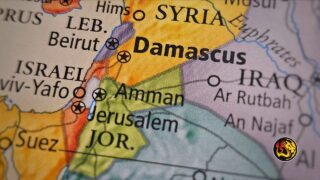
by Stefan J. Bos, Worthy News Chief International Correspondent
DAMASCUS (Worthy News) – The government of Syrian President Bashar al-Assad secretly moved thousands of bodies from a massive grave near the capital, Damascus, to a hidden desert site as part of a two-year effort to conceal evidence of war crimes and improve the regime’s image, investigators say.
The report, initially published by Reuters news agency, details a clandestine operation between 2019 and 2021 in which security forces trucked corpses from the Qutayfah area, one of Syria’s largest known mass grave sites, to a remote desert location more than an hour away. Satellite imagery and witness testimonies reportedly show at least 34 new trenches, stretching hundreds of meters, dug to bury the relocated remains.
OPERATION ‘MOVE EARTH’
The operation, known inside Syria as “Move Earth,” was allegedly aimed at erasing physical evidence of extrajudicial killings and torture committed in Assad-controlled detention centers during the country’s brutal civil war. Human rights investigators say the relocation represents one of the most significant known efforts by a Middle Eastern government to destroy evidence of mass atrocities.
Assad or others associated with him have not publicly commented on the findings. However, they denied accusations of systematic torture and mass executions in the past.
Reuters cited multiple Syrian officials, truck drivers, and gravediggers as saying the bodies included those of men, women, and children killed in secret prisons and military campaigns over the past decade.
CALLS FOR ACCOUNTABILITY
Rights organizations, including Human Rights Watch, have urged preserving desert sites for forensic investigation and prosecution under international law. They warned that removing or reburying remains may permanently hinder efforts to identify victims and document crimes against humanity.
International prosecutors have previously described Syria’s prison network as a “state-run machinery of death,” estimating that more than 100,000 people disappeared or were executed since 2011.
IMPACT ON MINORITIES
The relocation has also reignited concern among Syria’s Christian minority, which has dwindled from about 10 percent of the population before the war to less than 2 percent today. Church leaders and human rights advocates fear that the concealment of evidence may erase the identities of victims from Christian and other minority backgrounds, many of whom vanished during the conflict.
Christian families and others still searching for missing relatives have expressed anguish that their loved ones’ remains may now be buried in unmarked desert graves, making closure and justice even more elusive.
HUMAN COST CONTINUES
Syria’s 14-year conflict has left hundreds of thousands dead and displaced millions. Despite the fall of Assad’s regime late last year, the scars of war remain visible — not only in destroyed cities but also beneath the desert sands now concealing its darkest chapters, his critics say
Rights experts say uncovering the truth about Syria’s mass graves will be vital for reconciliation and accountability to build a better future for the divided.
Copyright 1999-2025 Worthy News. This article was originally published on Worthy News and was reproduced with permission.
